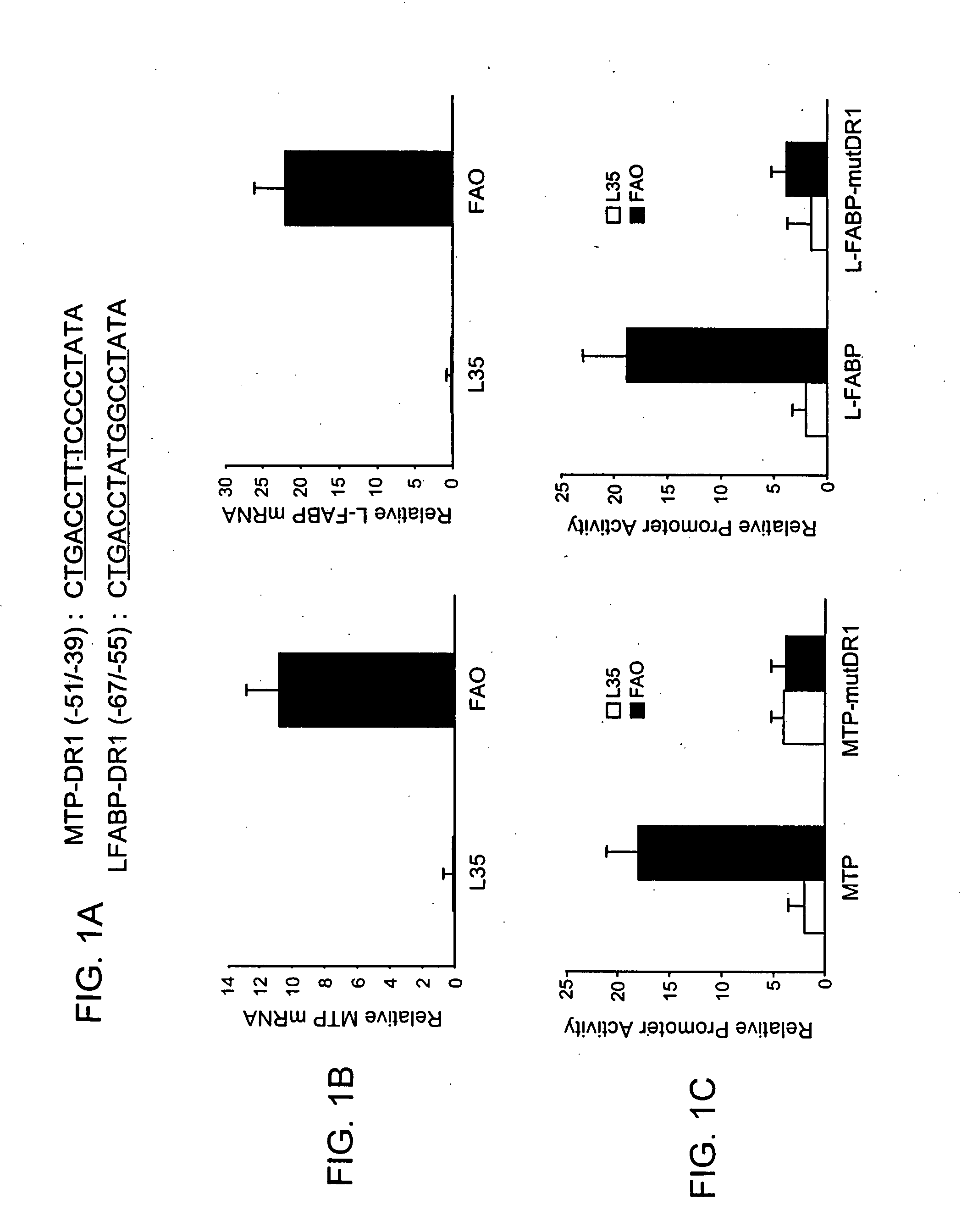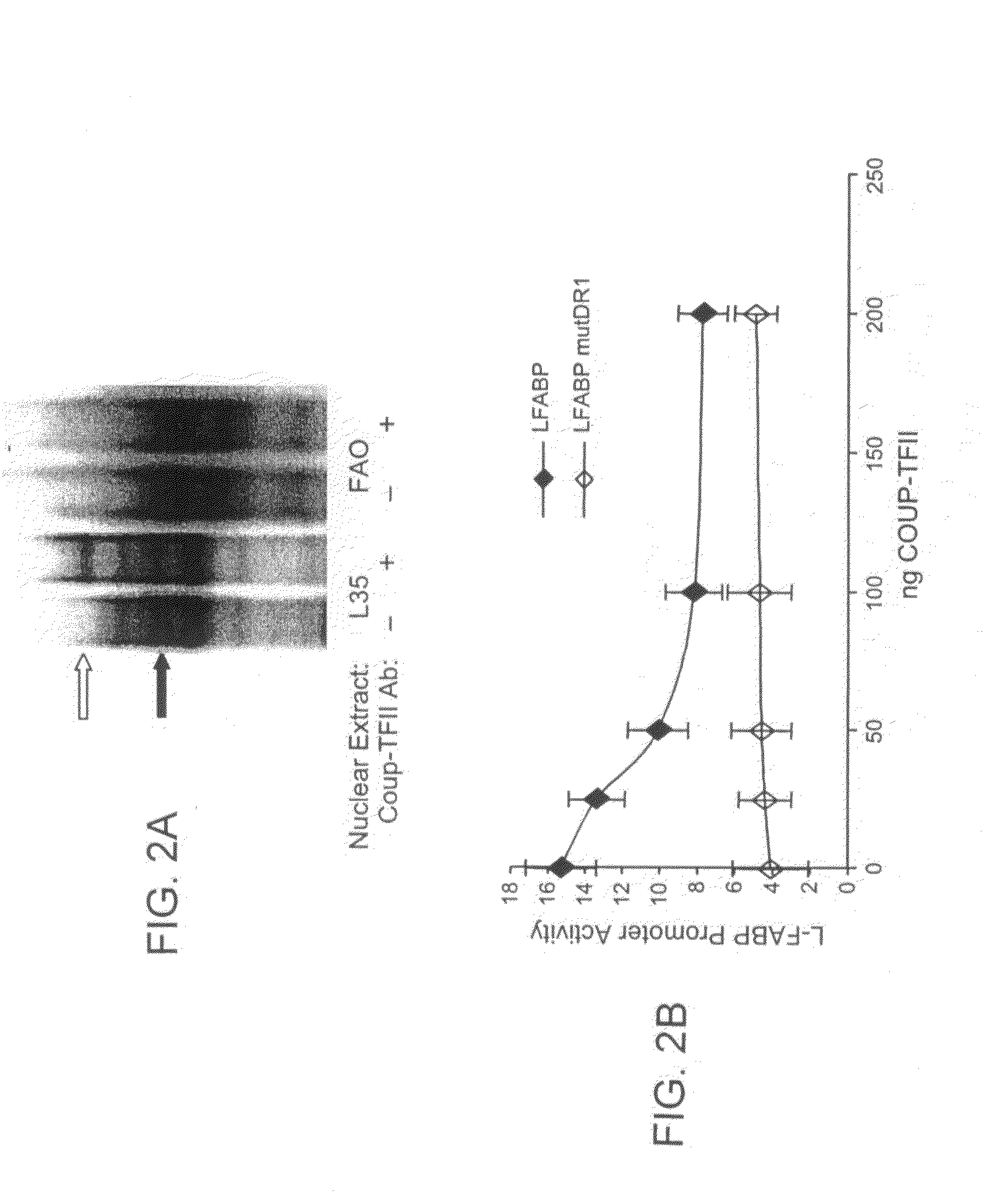Compositions and methods for ameliorating hyperlipidemia
a hyperlipidemia and composition technology, applied in drug compositions, biochemistry apparatus and processes, metabolic disorders, etc., can solve the problems of hepatic steatosis (i.e. fatty liver development), unsafe or useful, heart attack, stroke, etc., to reduce plasma lipids, reduce hyperlipidemia, and reduce plasma lipids
- Summary
- Abstract
- Description
- Claims
- Application Information
AI Technical Summary
Benefits of technology
Problems solved by technology
Method used
Image
Examples
example 1
Deleting L-FABP Expression Prevents the Development of Hepatic Steatosis
[0096]This example demonstrates use of L-FABP inhibitors as a means to prevent the development of hepatic steatosis caused by MTP inhibitors.
[0097]Cell culture. Cells were cultured and transfected as described (Kang et al., 2003). FAO cells were obtained as a gift from the University of Colorado. L35 cells were obtained as described (Leighton et al., 1990).
[0098]Cells were transfected using LipofectAMINE reagent (Invitrogen) according to manufacturer's protocol, with minor modifications (Kang et al., 2003). One day prior to transfection, L35 and FAO cells (2×105) were seeded on 12-well plates. On day of transfection, cells were transfected 0.8 μg of promoter / luciferase reporter construct and 6 ng of pRL-CMV plasmid as an internal control for normalization of L-FABP and MTP promoter activities. The normalized pRL-CMV activities are reported relative to activity of the empty vector from parallel experiments. Varyi...
example 2
Chemical Inhibition of L-FABP Prevents the Development of Hepatic Steatosis
[0131]This example illustrates that co-administration of a L-FABP inhibitor with a MTP inhibitor reduces plasma triglyceride concentrations.
[0132]3-(decyldimethylsilyl)-N-[2-(4-methylphenyl)-1-phenylethyl]propanamide (Sandoz compound 58-035) (lot # fr. 09061988) has been shown to inhibit L-FABP. It was therefore examined if co-administration of Sandoz compound 58-035 with MTP inhibitor 8aR (Novartis, Summit, N.J.) would prevent the development of hepatic steatosis in wild-type mice. Prior to treatment, mice were bled and their serum concentrations of triglycerides (FIG. 10) and cholesterol (FIG. 11) were measured. Mice were then gavaged with 0.150 ml of corn oil (vehicle only) or with corn oil containing the MTP inhibitor 8aR (50 mg / kg) or corn oil containing the MTP inhibitor 8aR (50 mg / kg) plus the L-FABP inhibitor Sandoz compound 58-035 (100 mg / kg). After 7 days of treatment, mice were bled and sacrificed....
PUM
 Login to View More
Login to View More Abstract
Description
Claims
Application Information
 Login to View More
Login to View More - R&D
- Intellectual Property
- Life Sciences
- Materials
- Tech Scout
- Unparalleled Data Quality
- Higher Quality Content
- 60% Fewer Hallucinations
Browse by: Latest US Patents, China's latest patents, Technical Efficacy Thesaurus, Application Domain, Technology Topic, Popular Technical Reports.
© 2025 PatSnap. All rights reserved.Legal|Privacy policy|Modern Slavery Act Transparency Statement|Sitemap|About US| Contact US: help@patsnap.com



